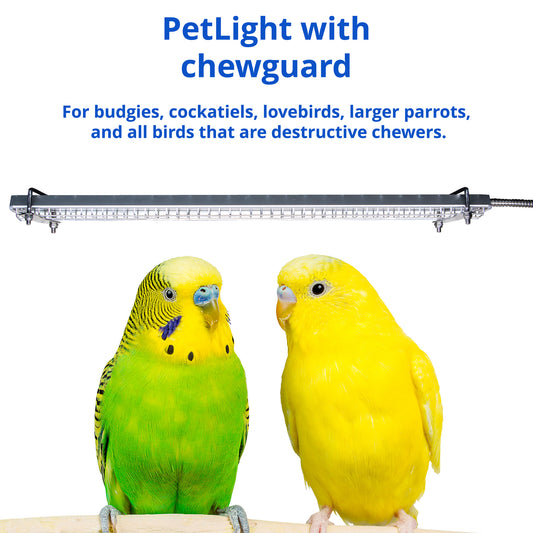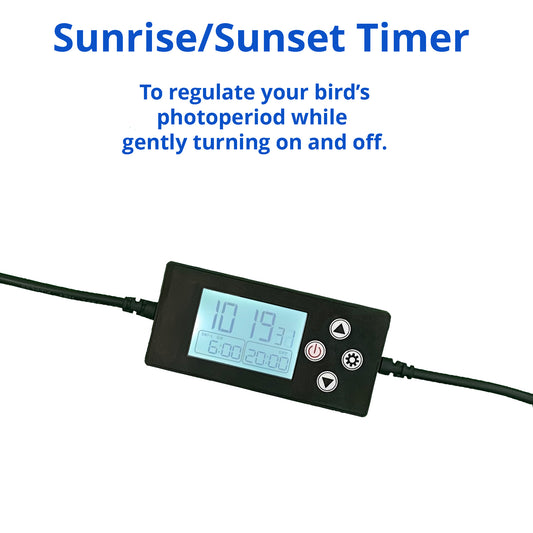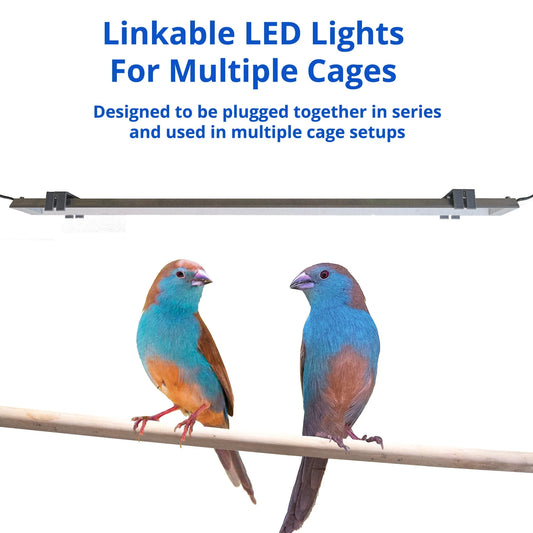Setting Up the Perfect Bird Cage: Lighting and Comfort Tips
Share

Creating the perfect bird cage isn’t just about toys and perches — it’s about building an environment that mirrors the natural rhythm of life outdoors. And that starts with lighting.
Here’s how to set up your bird cage with the right light fixtures, proper placement, and a day/night rhythm that keeps your bird calm, active, and comfortable year-round.
☀️ Why Lighting Is the Foundation of a Bird-Friendly cage
Birds are deeply attuned to light cycles. In nature, light tells them when to wake, eat, preen, and rest. Indoors, without consistent and appropriate lighting, birds can become disoriented, inactive, or overly alert at the wrong times.
A well-lit bird cage doesn’t just help your bird see — it supports their routine, mood, and behavior.
🔧 Choosing the Right Bird Light Fixture
Lighting a bird cage starts with the right kind of fixture. Household lamps or ceiling lights often fail to deliver the brightness or spectrum birds need.
Look for a dedicated bird light fixture that’s:
-
✅ Cage-mountable or ceiling-mounted over the cage
-
✅ Flicker-free, as birds are sensitive to imperceptible flicker
-
✅ Broad-spectrum visible light, without artificial UVB
-
✅ Equipped with low-voltage cables (like12 VDC) for safety
-
✅ Protected with nibble-proof guards and cable shielding
HappyBird lights are built for exactly these needs — with safety and bird perception at the center of the design.
📍 Where to Place Your Bird Lights
Placement matters as much as the light itself.
Here’s how to position your lighting for maximum comfort and effectiveness:
-
Over the main perch area: This ensures your bird receives light during its most active periods (eating, playing, preening).
-
Mounted on or near the cage: A light above the cage puts illumination inside the bird’s environment.
-
Avoid backlighting or sidelighting: Uneven shadows can create confusion or stress.
And remember: lighting should never shine directly into your bird’s eyes.
⏲️ Mimicking the Day/Night Cycle Indoors
To create a rhythm your bird can rely on, aim for 10–12 hours of bright light per day, followed by consistent darkness or a gradual dim-down.
Daily lighting routine example:
| Time | Action |
|---|---|
| 7:00 AM | Lights on (simulate sunrise) |
| 7:00 PM | Lights off (or dim to simulate sunset) |
Add a timer or smart plug to your bird light fixture for consistency. This keeps your bird’s routine stable — even on your busiest days.
🛋️ Lighting Is Just One Part of the Bird Cage Setup
Here’s how lighting fits into the full comfort setup:
| Element | Purpose |
|---|---|
| Lighting | Mimics day/night rhythm and supports activity |
| Perches | Varying heights and textures for foot health |
| Toys | Stimulate foraging and curiosity |
| Safe fixtures | No exposed cables, no sharp edges |
| Ventilation | Clean, fresh airflow |
| Quiet corners | Allow for rest and downtime |
Think of your lighting as the “sun” in the cage — everything else revolves around it.
🧩 Final Thoughts
The perfect bird cage isn’t just about space — it’s about atmosphere.
By choosing the right bird light fixture and setting it up to follow a natural rhythm, you create an indoor environment that respects your bird’s instincts and keeps them grounded, active, and at peace.
Start with lighting, and everything else will follow.



